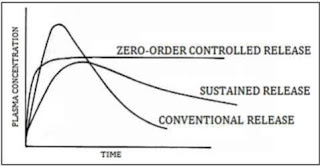write down the name of some antipsychotics which have the risk of agranulocytosis.
1.
write
down the name of some antipsychotics which have the risk of agranulocytosis.
Agranulocytosis is a severe side effect associated
with certain antipsychotic medications. Some antipsychotics with a risk of
agranulocytosis include:
1. Clozapine (Clozaril)
2. Olanzapine (Zyprexa)
3. Quetiapine (Seroquel)
4. Risperidone (Risperdal)
2. Positive and Negative symptoms of schizophrenia
Positive
symptoms of schizophrenia are those that involve an excess or distortion of
normal functions. These symptoms include:
1. Hallucinations: Sensory perceptions that occur in the absence of
external stimuli, commonly auditory hallucinations (hearing voices), but can
also involve visual, tactile, olfactory, or gustatory sensations.
2. Delusions: Fixed false beliefs that are held despite evidence to
the contrary. Delusions can be persecutory (belief of being targeted or
mistreated by others), grandiose (belief of having exceptional abilities or
status), or bizarre (implausible and illogical).
3. Disorganized thinking: Manifested as disorganized speech
patterns, incoherent or tangential thoughts, and difficulty in organizing
thoughts and ideas cohesively.
4. Disorganized or abnormal motor behavior: Includes agitation,
catatonia (immobility or excessive movement), and bizarre posturing or
grimacing.
Negative symptoms of schizophrenia involve deficits
or diminishment of normal functions and include:
Extrapyramidal effects:
The inhibitory effects of dopaminergic neurons are
normally balanced by the excitatory actions of cholinergic neurons in the striatum. Blocking dopamine receptors
alters this balance, causing a relative excess of cholinergic influence, which
results in extrapyramidal motor effects. The appearance of the movement
disorders is generally time and dose dependent, with dystonias occurring within
a few hours to days of treatment, followed by akathisias occurring within days
to weeks.
1. Akathisia:
•
Characterized by extreme motor restlessness or "nervousness“
•
People may be observed to pace, jog their legs, repeatedly sit
then stand
•
When severe, people may not be able to sleep
•
May be a cause of increased
aggression in people having developmental disabilities. Onset: immediate
to a few days
2Tardive Dyskinesia
·
Characterized by involuntary muscle movements
·
Onset generally after many years of taking antipsychotic
medications.
·
Can be progressive and permanent
·
less likely with atypical antipsychotics (AP)
Typical movements:
·
chewing, lip-smacking, lip-licking, puffing
·
frequent blinking
·
tongue flickering
·
foot tapping, ankle movements
·
shrugging, twisting of torso, reflux, vomiting
·
Progresses to cause respiratory difficulties, aspiration pneumonia
3.
Dystonia
Ø
Characterized by a sustained, painful contraction of one or more muscle
groups. Common presentations: rigid tongue protrusion, throat "closing up" or tongue drawn back, upward
deviation of the eyes etc.
Ø
Onset: frequently within an
hour of dosage, may be recurrent
Ø
Can be lethal if airway obstruction occurs.
4.
Parkinsonian Side Effects:
Parkinson's disease, a degenerative condition causing tremor and motor impairment, is caused by a loss of dopamine-secreting neurons in an area of the midbrain called the substantia nigra and usually occur within
weeks to months of initiating treatment.
–
Onset generally about 7 days after beginning antipsychotic
medications
–
Key features: "pill-rolling" tremor, increased muscle
tone, stooped, shuffling gait, bradykinesia, impaired balance.
2. The four major dopaminergic
pathways are –
1.
The mesolimbic pathway,
2.
The mesocortical pathway,
3.
The nigro-striatal pathway, and
4.
The tubero-infundibular pathway.



Comments
Post a Comment
Thanks